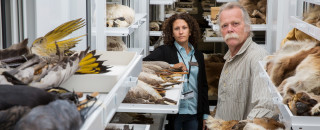
©Mark Johnston | NHMU
Vertebrate Zoology
Vertebrate zoology is the study of animals with a backbone. For centuries, scientists have used natural history collections to understand more about these animals and document their diversity across our planet and throughout time. Each specimen is a time capsule of information that tells us about the natural world at a particular place, time, and under certain conditions. This means that returning to past sampling sites is an especially important facet of our work – we are able to see how animals in a particular geographic range are changing and relate climate change, habitat destruction, and human activity.
The Museum holds nearly 90,000 specimens representing birds, mammals, reptiles, and amphibians from all across the globe, with a special focus on biodiversity in the Intermountain West. There are many ongoing research projects that use and contribute to our collections, such as the Great Basin Resurvey Project across Utah and Nevada and the first survey of small mammals at Goblin Valley State Park in Utah. The Intermountain West has many diverse landscapes from hot deserts toalpine environments(treeline and above), and the species inhabiting these landscapes are matched in diversity. For instance, see our list of mammals of the Wasatch Front.
Most of our collections are not on exhibit because in order to preserve the specimens in perpetuity, they must remain in climate controlled storage away from light and pests.. In addition to traditional study skins, skeletons, and fluid-preserved specimens, we have a collection of over 13,000 frozen tissues that can be used for genetics, disease screening, and stable isotope analysis. In 2020 we began collecting parasites from the animals we collect: ectoparasites (e.g. fleas, ticks) and endoparasites (e.g. tapeworms, nematodes). Each of these parts ties back to the voucher specimen and its associated data in a framework known as the extended specimen.
All of our specimen records are available online for researchers and the general public to search. Explore our collections of birds, mammals, reptiles, and amphibians!
Did you know...
There are over 6,600 mammal species in the world and 40% of them are rodents!
Vertebrate Zoology Collection Highlights
-
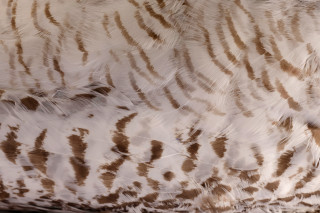
Snowy Owls
Snowy owls (Nyctea scandiaca) are native to the Arctic, spending the breeding season well above the Arctic circle (60°N) and migrate as far south as the US-Canada border in winter. Occasionally, snowy owls are found much farther south in the contiguous US in search of food. This particular specimen (UMNH:Bird:20654) was collected in 1962 from Antelope Island in the Great Salt Lake, making it the first and only record of a snowy owl in Utah.
Catalog #: UMNH:Bird:20654
-
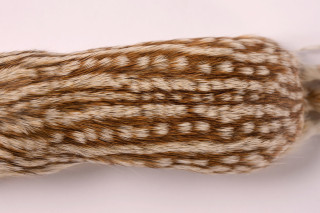
Thirteen-lined Ground Squirrel
The thirteen-lined ground squirrel (Ictidomys tridecemlineatus) is aptly named for its unique striped pattern. This species inhabits the grasslands of North America where its pattern acts as the perfect camouflage. Thirteen-lined ground squirrels are rare in Utah, for their distribution in Utah is limited to the eastern region of the state (Duchesne and Uintah counties) where shortgrass prairie habitat exists. This specimen (UMNH:Mamm:24850) is one of only 28 records from Utah.
Catalog #: UMNH:Mamm:24850
-
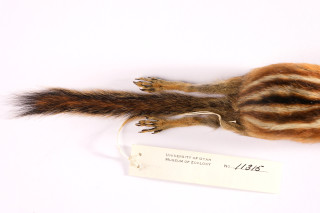
Hopi chipmunk
The Hopi chipmunk (Tamias rufus) is endemic to the Colorado Plateau, which spans the Four Corners region of the western US. This species is easily distinguished from other chipmunk species by its prominent red, or rufus, stripes. The Hopi chipmunk is commonly seen at many of the national parks in southern Utah, including Arches, Capitol Reef, Canyonlands, and Arches.
Catalog #: UMNH:Mamm:11315
-
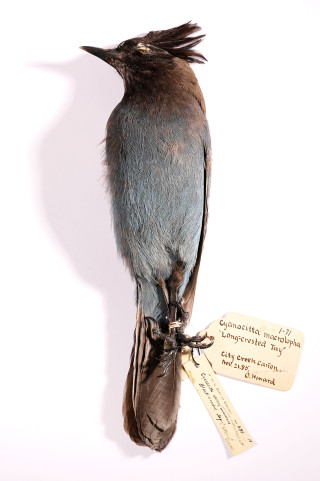
Steller’s Jay
This Steller’s jay (Cyanocitta stelleri) specimen is one of the earliest specimens in the Vertebrate Zoology Collection. Collected in 1885 in City Creek Canyon by Dr. Orson Howard, it remains in excellent condition. Dr. Howard was a professor at the U (formerly University of Deseret) and collected many birds, plants, and mollusks from around Utah. These specimens were originally used for teaching zoology classes but have remained under the care of curators and collections managers for over a century. Steller’s jays are still common along the Wasatch Front today and can even be seen occasionally around the museum.
Catalog #: UMNH:Bird:429
-
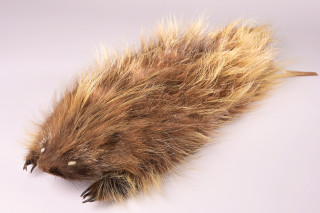
North American Porcupine
The North American porcupine (Erethizon dorsatum) is a large, arboreal (tree-dwelling) rodent famous for its sharp quills that it uses for protection. The quills on a porcupine are made of keratin, the same protein that makes up hair. Porcupines are born with soft quills that become thicker and harder as the animal ages. This specimen (UMNH:Mamm:28595) is a subadult covered in mostly soft quills with a few needle sharp quills interspersed. Porcupines are common in riparian (river) habitats with plenty of trees for them to climb and chew on. One of the best places to see porcupines is on Antelope Island. During the winter when the trees are without leaves, these yellow and brown critters are easy to spot way up in the branches.
Catalog #: UMNH:Mamm:28595
-
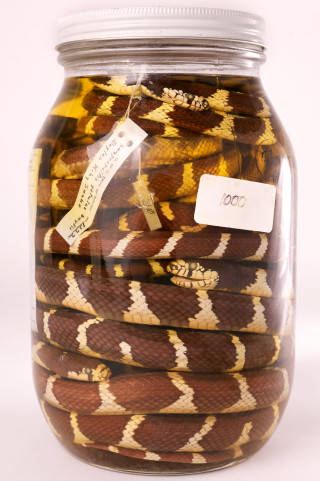
California Kingsnakes
This jar contains seven California kingsnake (Lampropeltis californiae) specimens collected between 1926-1943 from Zion National Park. These non-venomous snakes are common across most of the Mojave Desert. The Vertebrate Zoology collections at NHMU hold many specimens from the national parks in Utah, which serve as important records for the biodiversity in the parks prior to large crowds seen in these parks today.
Catalog #: UMNH:Herp:1222 UMNH:Herp:1988 UMNH:Herp:210 UMNH:Herp:2625 UMNH:Herp:2626 UMNH:Herp:2817 UMNH:Herp:3135 UMNH:Herp:69
-
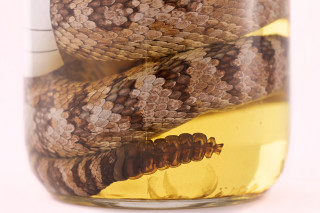
Great Basin Rattlesnakes
This jar contains two Great Basin rattlesnakes (Crotalus oreganus lutosus) collected in Utah county in the 1940s. Great Basin rattlesnakes live across the intermountain west and they are still common along the Wasatch Front today. If you’ve seen a rattlesnake while hiking on the Bonneville Shoreline Trail or Millcreek Pipeline Trail, this is the species you’ve seen. Rattlesnakes are misunderstood creatures, as many people are afraid of them because of their toxic venom. While rattlesnake venom is a dangerous toxin, bites from an unprovoked snake are incredibly rare. Rattlesnakes take several years to reach sexual maturity, so it is important to protect areas where rattlesnakes make their dens and raise their young. Feeding mostly on rodents, which can spread diseases like plague and hantavirus, rattlesnakes are important for keeping rodent populations in check.
Catalog #: UMNH:Herp:1297 UMNH:Herp:2853
-
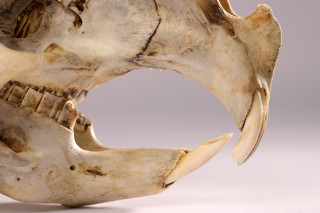
Capybara
The capybara (Hydrochaerus spp.) is the largest rodent in the world and its closest relatives are guinea pigs. These giants inhabit the wetlands of Panama, Colombia, and Venezuela, feeding on grasses and aquatic plants. This particular specimen (UMNH:Mamm:22336) was collected in the Canal Zone of Panama in 1966 by Edward O. Moll, a herpetologist and conservation biologist.
Catalog #: UMNH:Mamm:22336
-
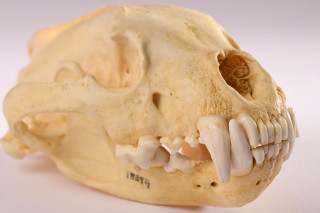
Wolverine
The wolverine (Gulo gulo) is the largest member of the weasel family. These fearsome carnivores inhabit the northern boreal forests of North America, Europe, and Asia and feed on the carrion left behind by other large carnivores, such as wolves and lynx. While wolverines are mostly found at high northern latitudes, they are occasionally spotted in the southern Rocky Mountains in the US, including Utah. Wolverines have a large home range, and a single individual can travel several hundred miles within just a few months to search for mate. Although exceedingly rare in Utah, one wolverine was found wandering around Antelope Island and Layton, UT in 2021. The Utah Division of Wildlife Resources captured this individual and fitted it with a radio collar to track its movements. This wolverine was then recaptured in Rich county and biologists collected hair, blood, and feces, which are archived here at NHMU. This wolverine skull (UMNH:Mamm:18294) in our collection was collected in southwestern Alaska in the early 1900s.
Catalog #: UMNH:Mamm:18294
-
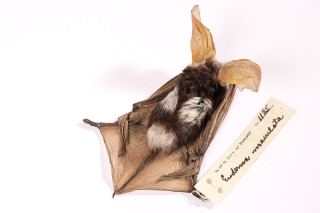
Spotted Bat
Once considered the rarest mammal in North American, the spotted bat (Euderma maculatum) is only represented by about 100 specimens in museums worldwide. This specimen, collected in Salt Lake City in 1934, represents the first record of the species in Utah and the 7th known specimen at the time. This individual was found under the eaves of Plymouth School House at 4800 South and Redwood Road and was cared for by a teacher, Miss Dorothy Naylor. When the bat died, Miss Naylor turned it over to the Department of Zoology at the University of Utah where it was prepared as a specimen. This species has long evaded mammalogists, for it flies late and night and high in the sky, making them difficult to capture and study. With the advent of acoustic monitoring technology which detects the high-frequency calls of bats, scientists have found the spotted bat is actually more common than previously thought. While these bats are extremely rare to see, their call can actually be heard without any special tools; their call sounds like two glass marbles clacking together. If you listen closely late at night in the desert, you may hear a spotted bat calling.
Catalog #: UMNH:Mamm:1135
-
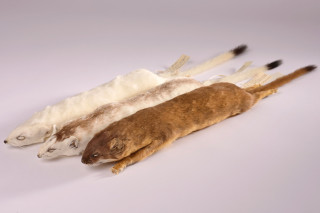
Long-tailed Weasels
Long-tailed weasels (Neogale frenata) are small carnivores that live across most of North America and the northern mountains of South America. These weasels are common in Utah and can even be seen poking around the museum building. In summer, they have brown fur which helps them blend in with the soil so they can hunt undetected. In autumn, they begin to shed their brown summer coat and replace it with a white winter coat so they can be camouflaged against the snow. This change is triggered by day length, so as the days grow shorter in autumn, they develop winter pelage. As climate change shifts the timing of snowfall, these weasels may struggle to adapt because they may be sporting white pelage in the absence of snow, making them an easy target for predators, such as hawks. These three specimens (UMNH:Mamm27191,22785,22345) were all collected in northern Utah in the 1960s in June, November, and December respectively. Series like this can be used to study the timing of coat color change as it relates to climate change.
Catalog #: UMNH:Mamm:27191 (Summer) UMNH:Mamm:22785 (Autumn) UMNH:Mamm:22345 (Winter)
1 of 11



